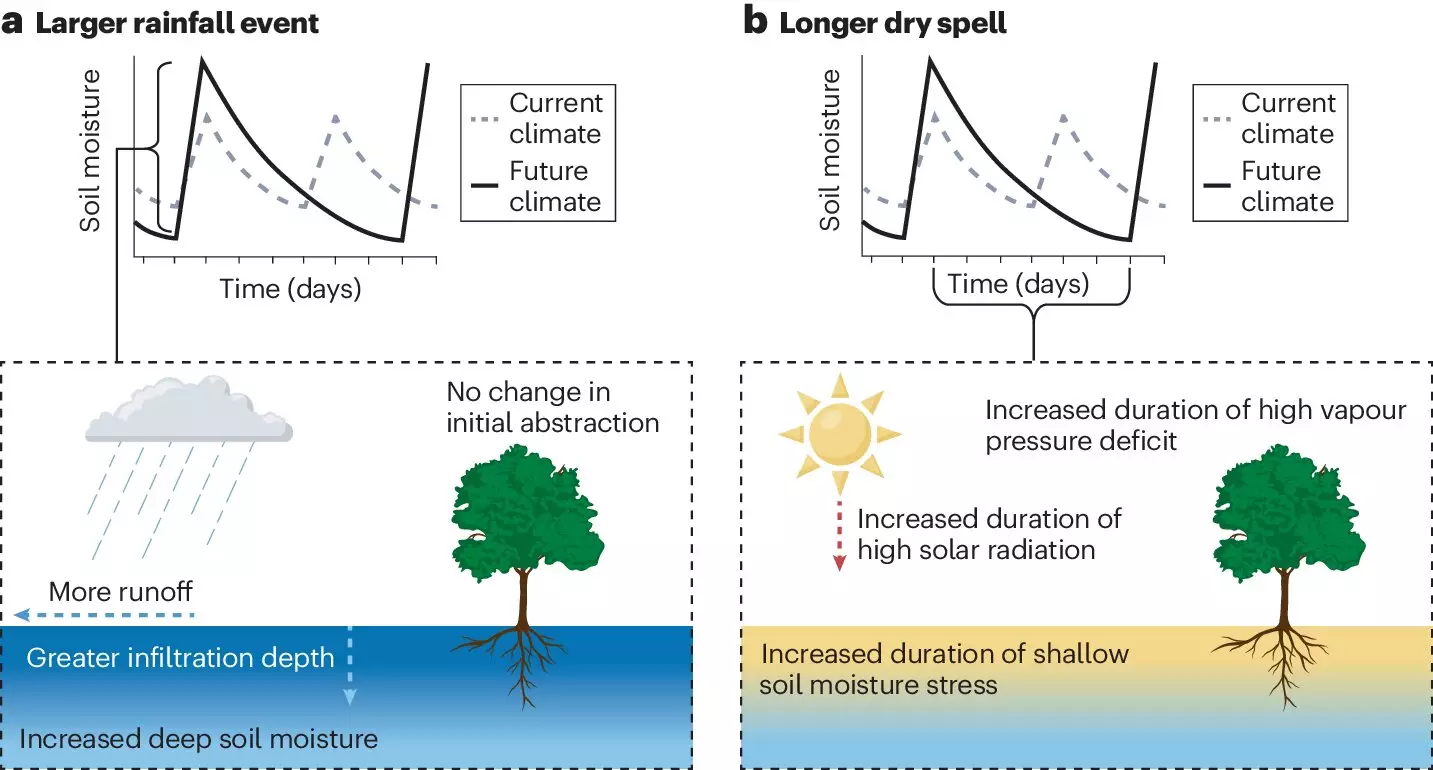Recent studies have shown that climate change is leading to more intense but less frequent rainfalls worldwide. This shift in rainfall patterns is having a significant impact on plant life, with some plants benefiting from the changes while others are being burdened by them.
Plants in different ecosystems are responding differently to the changing rainfall patterns. Dry ecosystem plants are more sensitive to large rainfall pulses and tend to benefit from downpours, while wet ecosystem plants are struggling to adapt. This contrasting response is causing a shift in plant composition within ecosystems, with potentially long-lasting consequences.
A recent study led by the University of Maryland found that plants in intermediately wet regions like the Midwestern United States experienced the most significant changes in function due to altered rainfall patterns, shifting by 25% over a year. Photosynthesis, greenness, and growth showed varying responses to changing rainfall patterns across different studies carried out globally.
Changing rainfall patterns are just one aspect of the larger issue of climate change. Plants will also have to contend with other long-term climatic changes, such as increasing atmospheric carbon dioxide concentrations and rising air temperatures. These factors will further complicate the ways in which plants respond to the changing environment.
Researchers are now focusing on conducting a global analysis of how plants respond to more intense, less frequent rainfall using satellite measurements. They also plan to investigate whether there is an optimal frequency of rainfall that allows plants to maximize their photosynthesis and growth. Understanding these underlying processes is crucial for accurately predicting the effects of extreme rainfall on plant life.
The impact of changing rainfall patterns on plant life is a complex issue that requires further study and understanding. As climate change continues to alter ecosystems around the world, it is essential to monitor and analyze how plants are responding to these changes. By doing so, we can better protect and preserve the delicate balance of our natural environment.


Leave a Reply